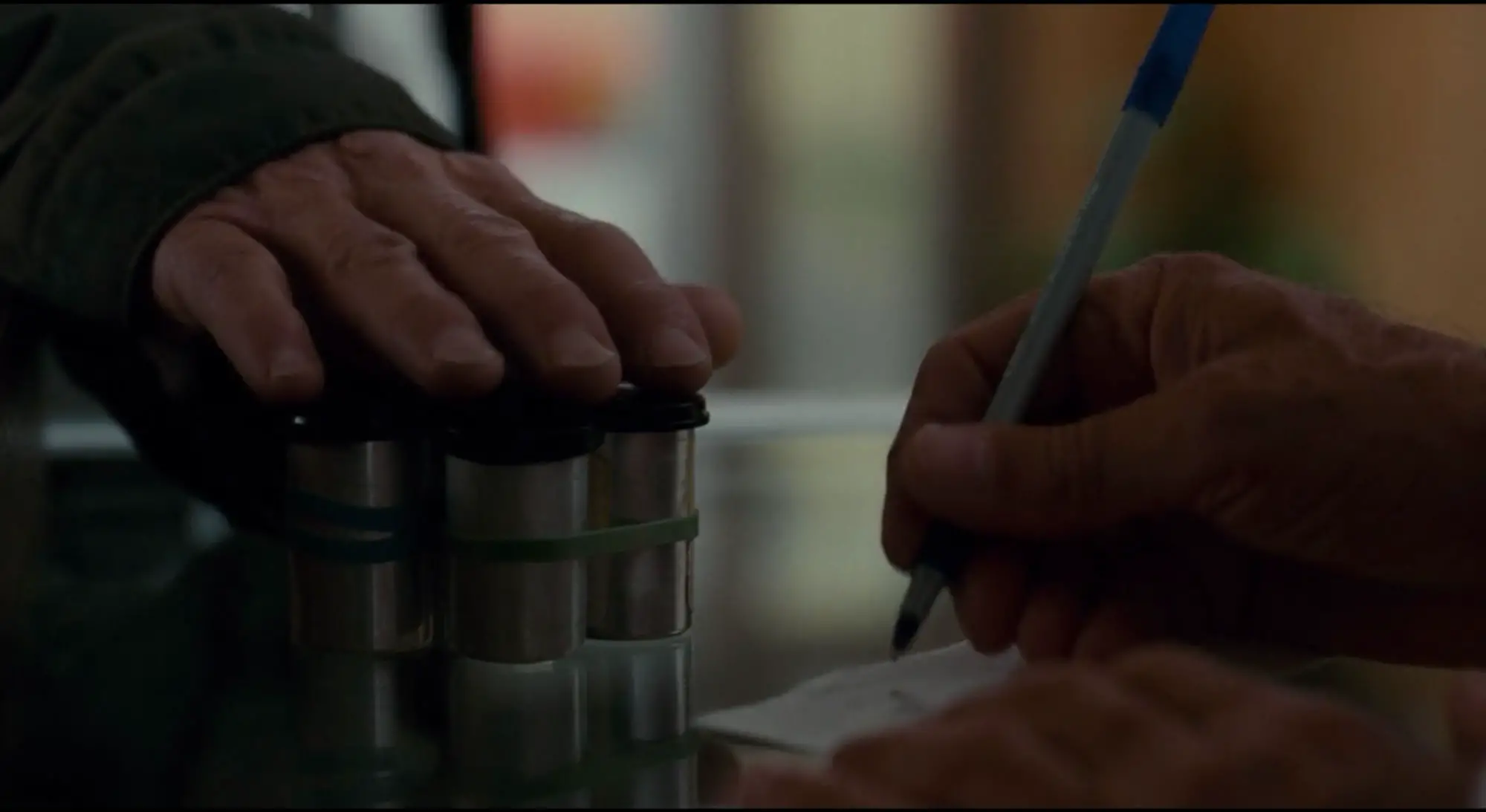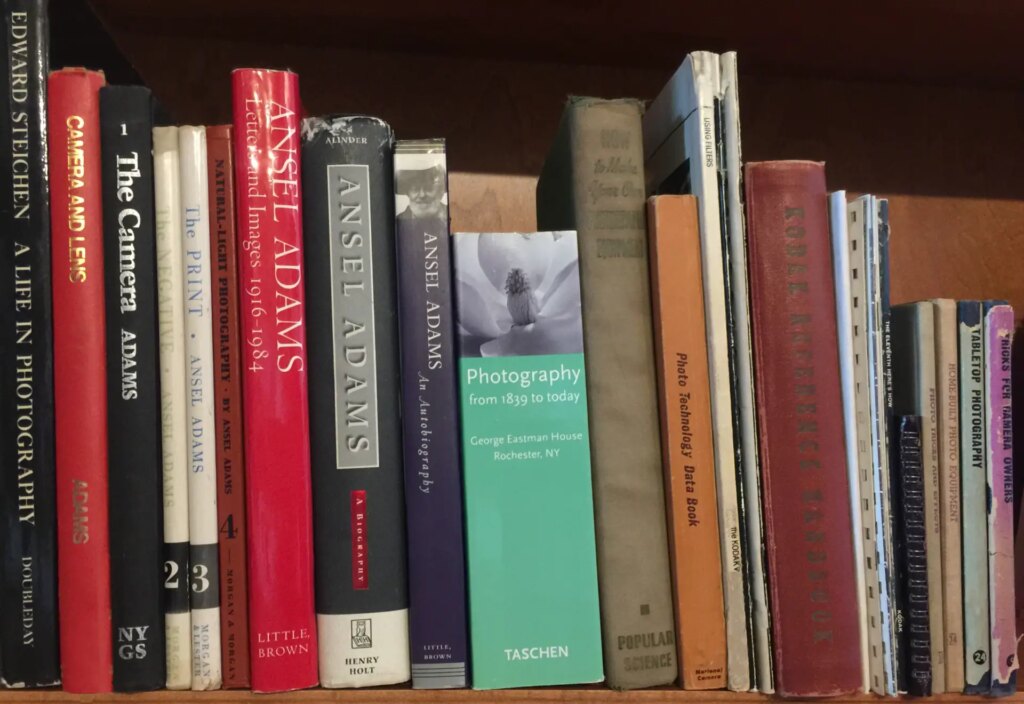Any film photographer who saw an advertisement for Kodachrome likely reacted as I did: “Gee, I really should check out that movie.” If you follow through, you might be disappointed that the story is about shooting slide film to the extent that acclaimed thriller Drive of a few years back was about an automobile race (the confusion the subject of ongoing litigation), but you would be rewarded with a family drama that is not only as much about family as possible but also as much a drama as imaginable. The two primary characters are an estranged father and his adult son. The elder, photographer Benjamin Ryder (Oscar nominee Ed Harris), whose coverage of Africa years ago made him a celebrity, is dying of cancer. Thus the younger Matt Ryder (comic actor Jason Sudeikis), whose career as a music executive has been struggling after he lost his wife and simultaneously his best bands, is summoned.
The third character, nurse Zooey (Elizabeth Olsen), is the bearer of the bad news, or, to be accurate from the perspective of the recipient, the non-news. That completes the triangle of relationships. Father and son have not communicated in a decade. Neither feels the need to reach out. The greater announcement to the terminally ill patient, surpassing his own demise in significance is that Kodak will cease manufacturing Kodachrome development chemicals, effectively resulting in the loss of the classic emulsion forever. He has discovered a handful of rolls of undeveloped film that he apparently shot decades ago. The father, who does not defend himself against the charge, was a philanderer; the son, it is implied, has followed in the same vein. The woman, wife to one, mother to the other, is an absent figure, and her death cannot be overcome. The nurse, of course, has her own secrets, about cuckolding her ex-husband, and then some.
Ben is successful enough to have a manager (Dennis Haysbert), which would mean he ranks at the top of the profession. He is as honest as he is unpleasant. He states that he knows he is an asshole. None would disagree. He remembers every frame he took. He has forgotten his son’s birthday.
The movie uses Kodachrome development chemicals as a quasi-MacGuffin. The term, coined by director Alfred Hitchcock, refers to an object that is a plot device in a movie but otherwise is nothing — it is free of content. Examples would be the titular Maltese Falcon in the Humphrey Bogart film noir, the letters of transit in Casablanca, or the briefcases in Pulp Fiction and Ronin. In some instances, however, the item has some significance in the story itself, but it serves as motivation rather than anything else. A quest can be inspired by it, such as with the Holy Grail in the King Arthur legend.
From the beginning of this drama, the depletion of Kodachrome development chemicals functions to compel a road trip to the last remaining commercial darkroom that has it in stock, Dwayne’s in Parsons, Kansas. That journey, in a vintage Saab convertible, guided by paper maps, in turn is a means to an end. Father and son must reconcile if not bond. Each needs to figure out why his life is a mess. Ben is who he is, by personality, ambition in his career, and his inability to control his sexual appetite. Photography is not blamed, despite being a medium that forces the artist to observe instead of participate in life, even if he could intervene against tragedy. The movie is about time. Photography seems as if it could stop time in the Kodak moment, but it cannot.
(Spoiler Alert.) The movie follows a formula. By my book, that is not necessarily negative: there are fine genre movies that execute so well what might have been cliche that they deserve compliments (e.g., Brian DePalma’s 1981 Blow Out is an homage to Michelangelo Antonioni’s 1966 Blow-Up, and it equals its predecessor despite the latter’s emphasis on the medium of photography). There can be no doubt that the curmudgeon must shuffle off his mortal coil, and it is reasonable to predict he will do so without any reconciliation with his progeny or redemption of his own soul. The closest his child comes to sympathy for him is when musicians newly celebrities laugh at the old man after he has soiled himself, ignorant of his identity or his ailment. Yet you might guess that, unlike a true MacGuffin, the undeveloped film is revealed to be important in its own right, not merely impetus for an awkward excursion to the heartland. The heir, as angry as his forebear, has had in his hands all along the proof that, for whatever his faults, his dad cared for those whom he cheated on.
For a photo buff, perhaps the best aspect of the movie is the cameo by Steve McCurry (of Afghan girl fame), who in reality had the privilege of shooting the last roll of Kodachrome — at least Ektachrome is coming back. A.G. Sulzberger, of the family who owns the New York Times, the national paper of record, himself wrote the article about the actual loss of the iconic reversal film stock that gave the writers the idea for their screenplay. The making of the movie should be noted too. The Kodak CEO boasted that it was shot on film. The distribution is through the latest multi-channel method. It was released as video-on-demand by Netflix as it was showing in old-school theaters following a film festival debut. For those curious, Ed Harris bought a vintage Leica that his character sports. (On set, he was an unofficial stills photographer.)
As a movie, Kodachrome is a welcome diversion. It’s good to see producers are still interested in reaching a mid-market audience with a modestly budgeted feature, sans special effects. My wife suggested we watch it, and she regarded it as acceptable. The actors were better than their roles. I would rate it as one of those entertainments that I would recommend to someone who is already disposed to enjoy it, and which was worth the time I spent on it but not much more than that. The prominence of photography should give it that bonus appeal to any hobbyist.
Share this post:









Comments
John Lockwood on Kodachrome Movie Review – it’s Good Even If it is About Family, Not Film – By Frank H. Wu
Comment posted: 11/05/2018
With deference to the author, I think the above paraphrase is profound, and a cautionary tale. I have often thought this, yet never worded it so well! Well done Mr. Wu!
Kodachromeguy on Kodachrome Movie Review – it’s Good Even If it is About Family, Not Film – By Frank H. Wu
Comment posted: 13/05/2018
jeremy north on Kodachrome Movie Review – it’s Good Even If it is About Family, Not Film – By Frank H. Wu
Comment posted: 16/06/2018